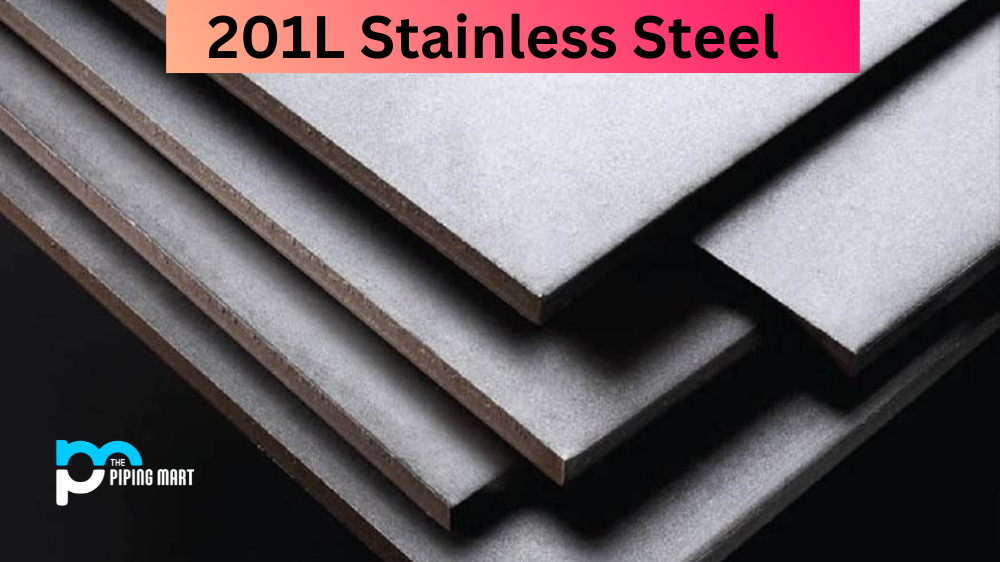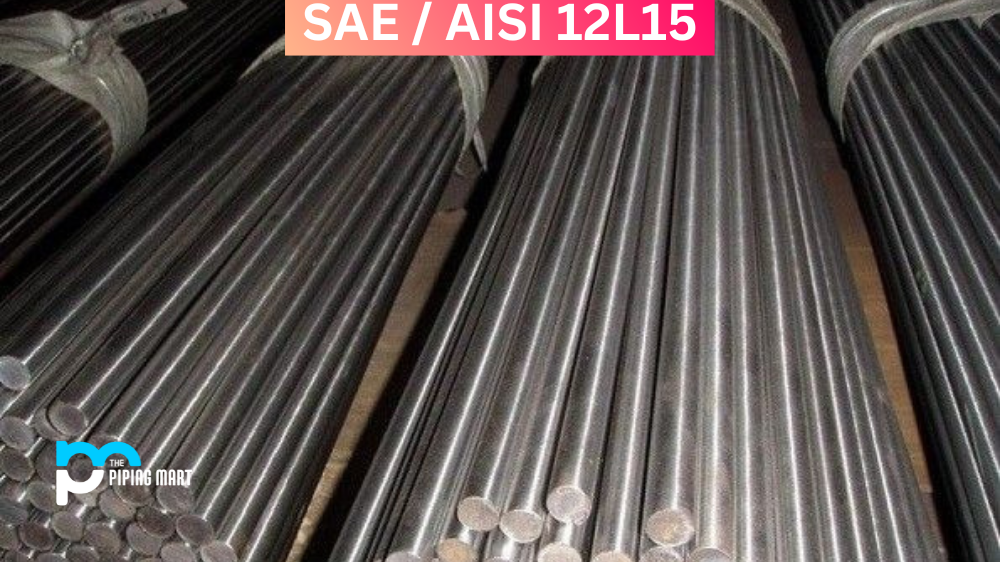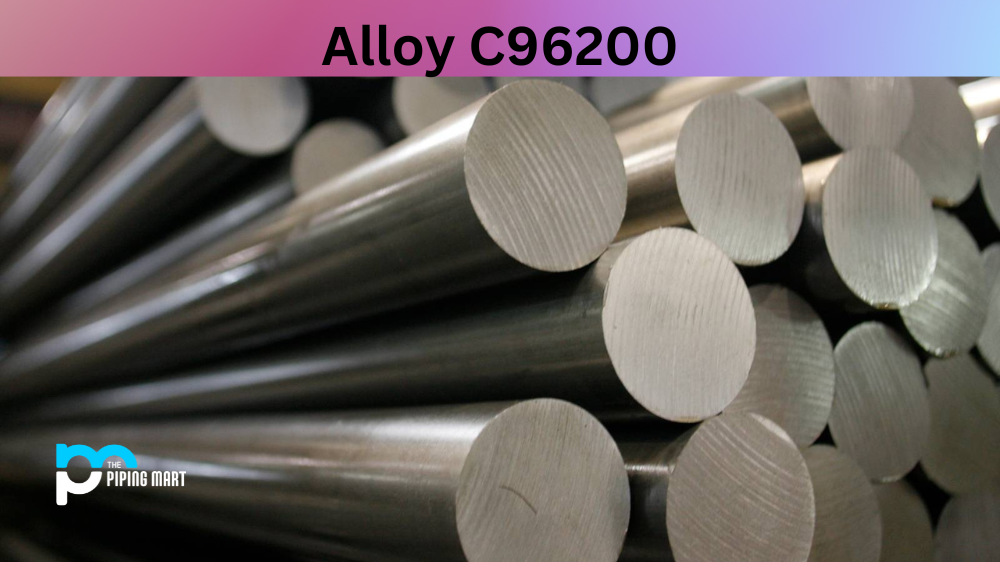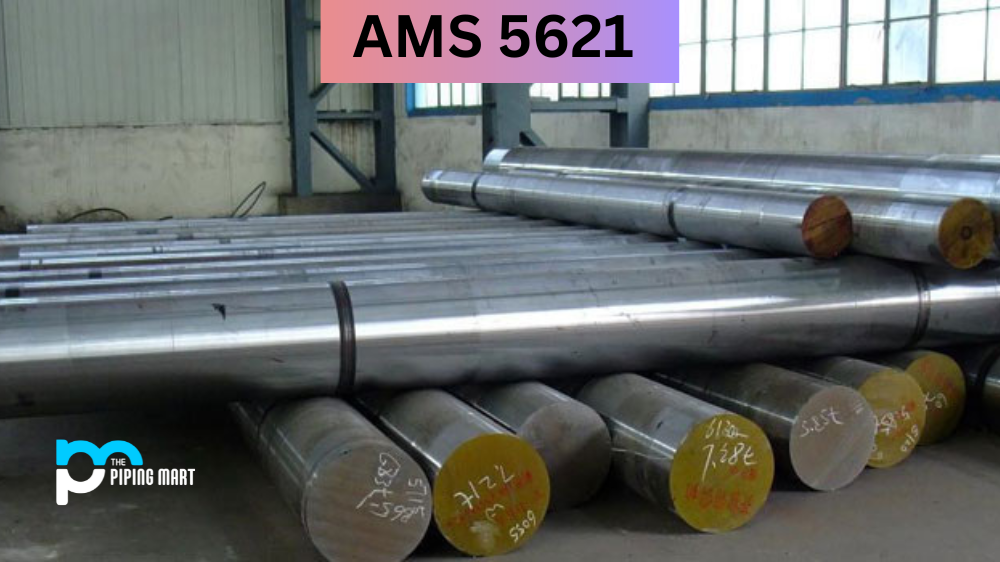If you’re an engineer or metalworker, you’ve likely come across 201L stainless steel. It’s a type of stainless steel that is incredibly versatile and widely used in many industries. This article will provide an overview of the composition, chemical properties, physical properties, and uses of 201L stainless steel.
201L Stainless Steel Composition
UNS S20103 is a low nickel variant of type 201 stainless steel. It contains 7-8% nickel, 4-7% manganese, 0.15-0.30% nitrogen, 0.03% sulfur, 0.25% carbon, 15-20% chromium, 2-3% molybdenum and 0.45-0.80% copper. These components give the material superior mechanical strength and corrosion resistance compared to other types of stainless steel alloys, such as 304 and 316-grade steels. The lack of nickel also makes it more cost-effective than higher nickel variants such as 301 or 202 grades steels.
| Element | Content (%) |
|---|---|
| Iron, Fe | 72 |
| Chromium, Cr | 16-18 |
| Manganese, Mn | 5.50-7.50 |
| Nickel, Ni | 3.50-5.50 |
| Silicon, Si | ≤ 0.75 |
| Nitrogen, N | ≤ 0.25 |
| Carbon, C | ≤ 0.030 |
201L Stainless Steel Chemical Properties
UNS S20103 has excellent corrosion resistance due to its high chromium content (15-20%), which helps form a protective oxide layer on the surface when exposed to air or moisture for extended periods of time. The low nickel content also makes it less susceptible to corrosion caused by chloride solutions like saltwater or chlorinated cleaners, which can cause pitting and crevice corrosion in high nickel alloys like 304 or 316 grades steels with time. Additionally, its low carbon content prevents carbide precipitation during welding, which can reduce the impact toughness of welded joints over time due to sensitization (formation of chromium carbides).
201L Stainless Steel Mechanical Properties
UNS S20103 is one of the most versatile materials when it comes to mechanical properties. With excellent weldability, formability, and machinability, it’s capable of handling and performing a variety of operations. Its strength and durability make it a great choice for applications such as structural components, kitchen wares, and lamps. Furthermore, its corrosion and oxidation resistance adds to its useful nature in many industries compared to other metals. 201L stainless steel is definitely a valuable material in manufacturing due to its many advantageous properties.
| Properties | Metric | Imperial |
|---|---|---|
| Tensile strength | 785 MPa | 114000 psi |
| Yield strength | 396 MPa | 57400 psi |
| Elongation | 56% | 56% |
| Hardness, Rockwell B | 93 | 93 |
201L Stainless Steel Physical Properties
The physical properties of UNS S20103 are determined by its composition, specifically its chromium content, which gives it superior hardness (Brinell hardness) compared to other types of stainless steels with lower chromium contents, such as 304-grade steels (190 BHN). It also has lower ductility compared to other austenitic materials due to its higher work hardening rate when deformed under load, but this can be beneficial if structural integrity is needed in applications where strong mechanical forces are present such as in aerospace components or automotive parts where forming operations may be done multiple times before finalizing their design specifications.
| Density | 7.80 g/cm³ |
| Thermal Expansion | 17 x10^-6 /K |
| Modulus of Elasticity | 200 GPa |
| Thermal Conductivity | 15 W/m.K |
201L Stainless Steel Uses
Due to its excellent corrosion resistance and cost-effectiveness compared to other types of stainless steels, 201L grade material is commonly used in food processing equipment such as tanks, piping systems for transporting liquids or semi-solids between different processing stages in the food industry or even storage vessels for various products including milk powder products etc., medical equipment such as surgical tools due to its nonmagnetic properties which allows for easier handling during surgical procedures without interference from magnetic fields; automotive exhaust systems because it resists oxidation at elevated temperatures better than other materials; aircraft components including airframes because it has good fatigue strength at high temperatures; architectural trim pieces due to its attractive silver finish when polished; kitchenware items like knife blades because they will not rust easily with regular use; and much more!
Corrosion Resistance
UNS S20103 is the perfect choice for corrosion-resistant applications. Its corrosion resistance properties make it excellent for many situations where metallic components are exposed to water, salt and acidic environments. The alloy contains chromium in high amounts, which provides superior rust protection, allowing products made of 201L Stainless Steel to last longer than alternatives. It also has excellent weldability, making it a great option for projects that involve bonding as well as forging processes. Thanks to its superior strength and durability, 201L Stainless Steel has become widely used in numerous industries, from automotive and aerospace to medical industries. With its performance and benefits, it is easy to understand why 201L Stainless Steel is a go-to material for resistive applications.
Heat Resistance
UNS S20103 is a popular choice among engineers due to its impressive heat resistance. This alloy can be exposed to temperatures up to 1650 degrees Fahrenheit without suffering severe degradation or warping, making it the top choice for industrial needs with higher temperature requirements. It can also handle high-temperature conditioning cycles, which is an attribute that requires extra attention when searching for the right material for a project. The wear and corrosion resistance of 201L stainless steel makes it ideal for applications that involve frequent temperature swings as well as hostile environments. Engineers consistently turn to 201L because of its versatility; not only does it possess superior heat-resistant qualities, but it also works great in several other applications.
Heat Treatment
Heat treatment of 201L stainless steel can have a variety of mechanical properties determined by the type and severity of the treatment applied. To anneal 201L stainless steel, it is heated to around 1900°F for about an hour before being quickly cooled. This process makes the metal softer and more formable. On the other hand, hardening 201L stainless steel involves heating it until it reaches a temperature between 1333°F to 1450°F and then rapidly cooling it in the air. This increases its tensile strength and durability. Additionally, stress relieving treatments such as a furnace or isothermal relieving can be used to reduce pressure while maintaining desired properties. By understanding and properly applying these different heat treatments to 201L stainless steel, users are able to achieve their desired mechanical properties with the utmost precision.
Machining
Machining UNS S20103 requires proper preparation and caution. The process involves careful cutting, de-burring, drilling and other techniques in order to achieve the desired shape or contour. Although 201L stainless steel is a relatively soft material with consistent hardness, it is also vulnerable to stress cracking. It is essential to use cutting tools that are sharp, robust and offer good performance during machining operations. Additionally, when machining this type of stainless steel, it is important to reduce the force applied during each cut as well as shorten cycle time to reduce warping and overall part distortion. By following these guidelines closely and considering the inherent characteristics of 201L stainless steel accordingly, machining operations can be completed smoothly with consistent results every time.
Welding
UNS S20103 welding is one of the most challenging aspects of metalworking. It requires a skilled set of hands to properly weld this material, as well as an understanding of the unique physical and mental characteristics that are associated with it. Although 201L Stainless Steel is often preferred for its great strength and durability, welds made on these products can easily crack due to carbon precipitation unless proper techniques are utilized. Additionally, welding has to take certain thermal shocks into consideration in order to make sure the weld lasts under different conditions. Welders need to be mindful of their technique while working with 201L Stainless Steel in order to ensure that their final product is both strong and long-lasting.
Conclusion
In conclusion, 201L stainless steel is an incredibly versatile material that can be used in many different industries due to its excellent corrosion resistance combined with cost-effectiveness compared to higher nickel variants like 304-grade steels while still maintaining similar mechanical strength characteristics when worked into desired shapes through machining processes or cold forming operations etc., making it one the most popular choices among engineers looking for reliable yet affordable materials for their projects today!

Pipingmart is a B2B portal that specializes in metal, industrial and piping items. Additionally, we share the latest information and information about materials, products and various types of grades to assist businesses that are involved in this business.




